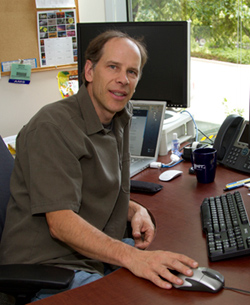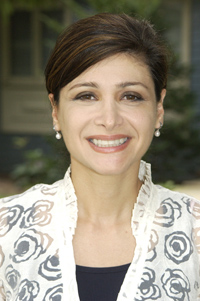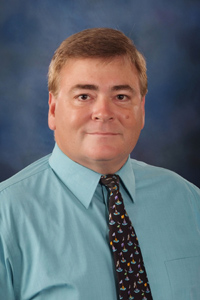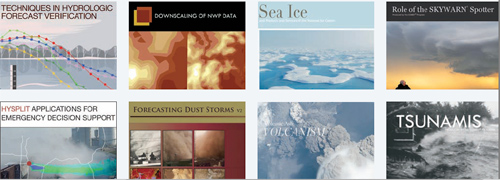A mecca of meteorology
MetEd sports a new look—and more users than ever
Sep 7, 2011 - by Staff
Sep 7, 2011 - by Staff
Nicole Gordon | 8 September 2011 • In the 1980s, the National Weather Service embarked on a major modernization effort that included the nation’s first Doppler radar network, mesoscale numerical models, and new meteorological satellites. To help engage the nation’s university expertise, the NWS teamed up with UCAR to create The COMET Program to enhance the skills of NWS staff.
Today, COMET’s education and training resources serve audiences far beyond the NWS. The program’s online portal for distance education, MetEd, has roughly 200,000 registered users from more than 200 different countries, and the growth curve has steepened in the past few years. Users range from professional forecasters and university students to amateur weather buffs, with about 120,000 of them affiliated with various educational communities. The MetEd website recently got a facelift to give it a fresh look and help users navigate the plethora of learning resources available, all of which are free, self-paced, and available for open enrollment (users only need to register once).

Bruce Muller manages media production for the extensive MetEd website.
“U.S. growth for the MetEd website has been steady, but the growth in international users has been particularly surprising and satisfying,” says COMET director Tim Spangler. “I suspect that the upgrading of Internet access in Africa has sparked new users of online training.”
The online classroom covers topics in meteorology, weather forecasting, and related geosciences. Users can delve into everything from satellite meteorology to tsunami preparedness and forecasting dust storms. Training consists of modules and courses; a module is targeted toward one focused subject, whereas a course is a collection of modules that pertain to a broader subject area.
Currently, MetEd boasts more than 400 modules, including more than 100 translated into Spanish and French, as well as a few in Russian, Portuguese, and Indonesian. Some modules are aimed at experts, others at beginners. Nearly all incorporate different types of media, including video, audio, animations, and more. Users can request certificates of completion and have their results sent to professors or supervisors.
Some modules log increased traffic when extreme events hit, such as the 2011 tsunami that struck Japan. “When the disaster occurred, usage of our tsunami modules spiked tremendously,” says Bruce Muller, MetEd’s media production manager. “And during big convective weather events or at the start of hurricane season, related modules get a boost.”
The process of choosing topics for modules is driven by MetEd’s main sponsor, the NWS, along with the European Organisation for the Exploitation of Meteorological Satellites, the Naval Meteorology and Oceanography Command, the Meteorological Service of Canada, and NOAA National Environmental Satellite, Data, and Information Service.
“We collaborate heavily with our sponsors, who ask us to focus on certain areas,” Muller says. “We also identify where there are gaps in our collections of materials.”
MetEd helps government agencies and other organizations cut costs by eliminating travel expenses associated with onsite training. For example, the program recently created a course that the U.S. Forest Service uses as required training for anyone pursuing certification as a wildlands firefighter. The Federal Emergency Management Agency (FEMA) is another agency that relies heavily on MetEd for training its personnel.

Sepi Yalda (Millersville University of Pennsylvania).
MetEd users are affiliated with more than 2,000 different universities, according to Muller. A fair number of university instructors require MetEd modules to be taken as part of the courses they teach, including Sepi Yalda, who teaches meteorology at Millersville University of Pennsylvania.
“I use the modules to supplement certain topics that we cover in class because they have such dynamic visuals and students really like them,” she says. “The quizzes embedded within the modules are useful because they help students gauge their understanding.”
Yalda adds that modules are widely used outside academia by professionals, including for the graduate emergency management course that she teaches.

Don Conlee (Texas A&M University).
“The modules provide the emergency management community access to applied scientific information that is beneficial in terms of understanding the concepts and decision making,” she says. “This is an important area of growth and also shows the reach of the modules beyond the atmospheric science community.”
Don Conlee, who teaches atmospheric sciences at Texas A&M University, says that he weaves MetEd media content into regular lectures in virtually all his classes, particularly in his senior forecasting course, in which students select and complete modules and then attempt to forecast using the techniques presented in those modules.
“I have received comments from many former students, in both private industry and the public sector, on how modules completed during their college courses help make them competitive in the workforce,” he says. “Employers always seem impressed with an applicant’s prior experience with MetEd.”
Conlee says that he has confidence in the scientific lineage of the well-attributed MetEd modules. Because the materials are stamped with copyright information, he’s much more comfortable that he is complying with copyrights when he posts lectures containing media on course websites. He also likes the relatively new capability of being able to search all modules for media content based on keyword.
“MetEd is the de facto keeper of synthesized meteorological knowledge,” says Conlee. “It mixes research, academics, and meteorological operations in a totally unique way. As long as COMET keeps the modules updated in both technology and content through interaction with both academics and operators, and continues to expand the number of modules to keep up with the knowledge base, MetEd will continue to be the single most important tool for meteorological education.”
Nearly a dozen people are often involved with the production of a MetEd module, including scientists, instructional designers, graphic artists, Web developers, and more. A module may take three to five months to develop, from the time that a project lead writes a storyboard and identifies graphics to posting the final multimedia product on the Web.

MetEd offers a smorgasbord of instruction in atmospheric and related science.
“Finalizing the content and the media elements for a module is a very iterative process. It takes patience, an attention to detail, and the ability to put yourself in the shoes of the learner,” Muller says. “Our instructional designers and graphic artists strive to make an expert’s insight understandable to a broad audience.”
The presence of engaging graphics and animations is a hallmark of MetEd modules. COMET’s graphic artists work with scientists and instructional designers to turn sketches into immersive media elements using tools such as 3D Studio Max, Photoshop, and Flash.
Muller expects MetEd to see a spike in amateur weather buffs in the near future. The program recently created modules for the NWS’s SKYWARN severe weather spotter program, which will replace onsite trainings at forecast offices. Students will learn how to distinguish tornado look-alikes from actual twisters, and how to report their observations clearly and accurately—plus how to stay safe while doing so.